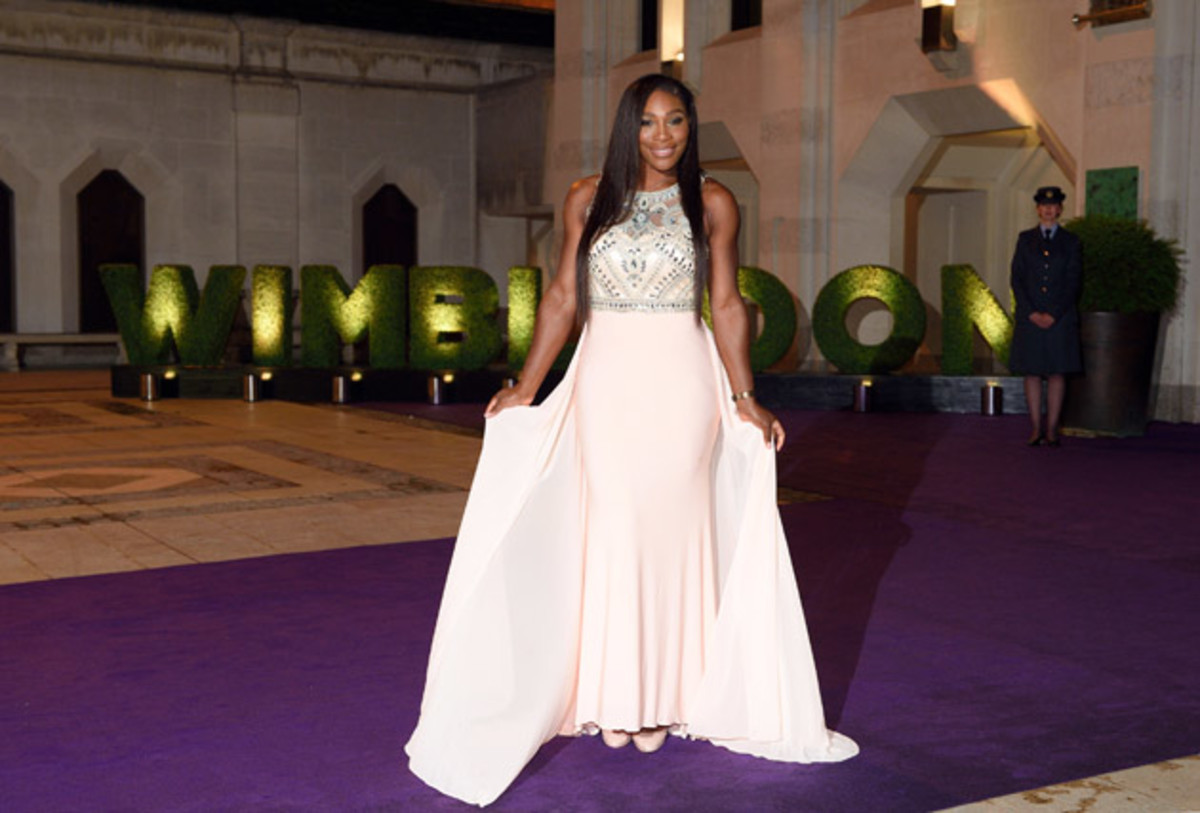No room for body image criticism in Serena Williams' Grand Slam chase

What does one get for winning a sixth Wimbledon title and 21st major, and for being one tournament from completing a calendar Grand Slam? You get accolades and $3 million in prize money and a haul of ranking points. But you also get a whole lot of criticism.
While Serena Williams was solidifying herself as the G.O.A.T. of women’s tennis and, arguably, the greatest female athlete in any sport, there was endless chatter and scrutiny across various media platforms about her physique. The discussion centered on why her body doesn’t fit into society’s idea of femininity and beauty; on why she isn’t skinny and white and blonde a la Maria Sharapova, Caroline Wozniacki or Eugenie Bouchard. On Twitter one Serena adversary tweeted, “the main reason for her success is that she is built like a man.” That prompted Harry Potter series author J.K. Rowling to respond.
[tweet=https://twitter.com/jk_rowling/status/619886370081869824]
On the eve of Serena’s 6–4, 6–4 win over Spain’s GarbineMuguruza in the Wimbledon final, the New York Times came under fire for publishing an article by contributing writer Ben Rothenberg titled, "Tennis’s Top Women Balance Body Image with Ambition." The article seemingly criticized Serena’s physique in comparison to the non-black women on the WTA Tour who make it a point to not mirror her frame, regardless of whether it could bring more success on the court. “Williams has large biceps and a mold-breaking muscular frame, which packs the power and athleticism that have dominated women’s tennis for years. Her rivals could try to emulate her physique, but most of them choose not to,” wrote Rothenberg. While trying to discuss how female players struggle with body image and weight training, through the views of the athletes themselves, the article set off a firestorm on social media.
In response to the criticism, the New York Times sports editor Jason Stallman told the New York Times public editor Margaret Sullivan that the paper intended to present “a nuanced look at this issue, which we appreciated is a sensitive one.” Stallman also noted that of the four editors who edited Rothenberg’s article, three were women. But the idea that the story went through various edit processes and revisions and not one person paused to say, “maybe an angle in which a bunch of white female athletes talk about how they do not want to look like a black woman is not the best way to go,” is baffling.
As Serena was imposing her 125 mph serve on Muguruza on Centre Court last Saturday, Sharapova’s agent Max Eisenbud tweeted, “125 mph #isthisnormal.”(He, too, was promptly taken to the shed by the Twitter universe.) Never mind the fact that the fastest serve on the women’s tour belongs not to Serena, but to Germany’s Sabine Lisicki (another blonde), whose serve at the 2014 Stanford Classic clocked in at an almost supersonic, 131 mph. Other tweets and social media commentary were more offensive, ranging from PED speculation to gorilla references to implications that Serena and sister Venus were from out of space. The responses made you wonder if anyone was really watching tennis at all.

Make no mistake—Serena is neither thin, nor demure and she makes no excuses for it. Nor is she blonde or white, which often causes a racial divide when social commentary about her, beauty and femininity are brought up, especially in terms of marketing. Sharapova, who has won five Grand Slams to Serena’s 21, made $26 million in endorsements in 2014, compared to Serena’s $22 million. Critics maintain it is because Sharapova is more likable and marketable than Serena, who is at times, considered abrasive with a hot temper. Yet many on the Tour will affirm that Sharapova is not a locker room darling and is often curt off the court.
The controversy over body image is nothing new in the Williams household. Ever since Serena and older sister Venus burst onto the tennis scene in the late 90s, they have been condemned for both their muscular physiques and crushing physicality on court. Most recently in October 2014, Russian Tennis Federation president Shamil Tarpischev referred to Venus and Serena as “The Williams Brothers” during an appearance on a Russian TV show—he was promptly fined the maximum amount of $25,000 and suspended from any WTA-related activities for one year afterwards.
Through all of the criticism and body shaming, both Venus and Serena have managed to look the other way. Although Serena has commented about insecurities with her muscular body in the past, she maintains that her physique is genetic and that her workouts are not centered on weight training. “I've never loved working out,” she said after the Wimbledon final. “When I first started [playing tennis], I would always ride the bike or work on my legs. Then I started doing more running. Then I started doing more sprint work, but nothing major, never weights.”
While many deplored the commentary and defended Serena on social media, the World No. 1 dazzled at Sunday's Wimbledon Champions' Dinner, celebrating her 21st Grand Slam trophy in a form fitting, pink dress. “Swerve," she wrote in an Instagram post of the floor-length gown, which featured pearl and rhinestone embellishments, a mesh bodice and a silk train. How Ya Like Me Now?
